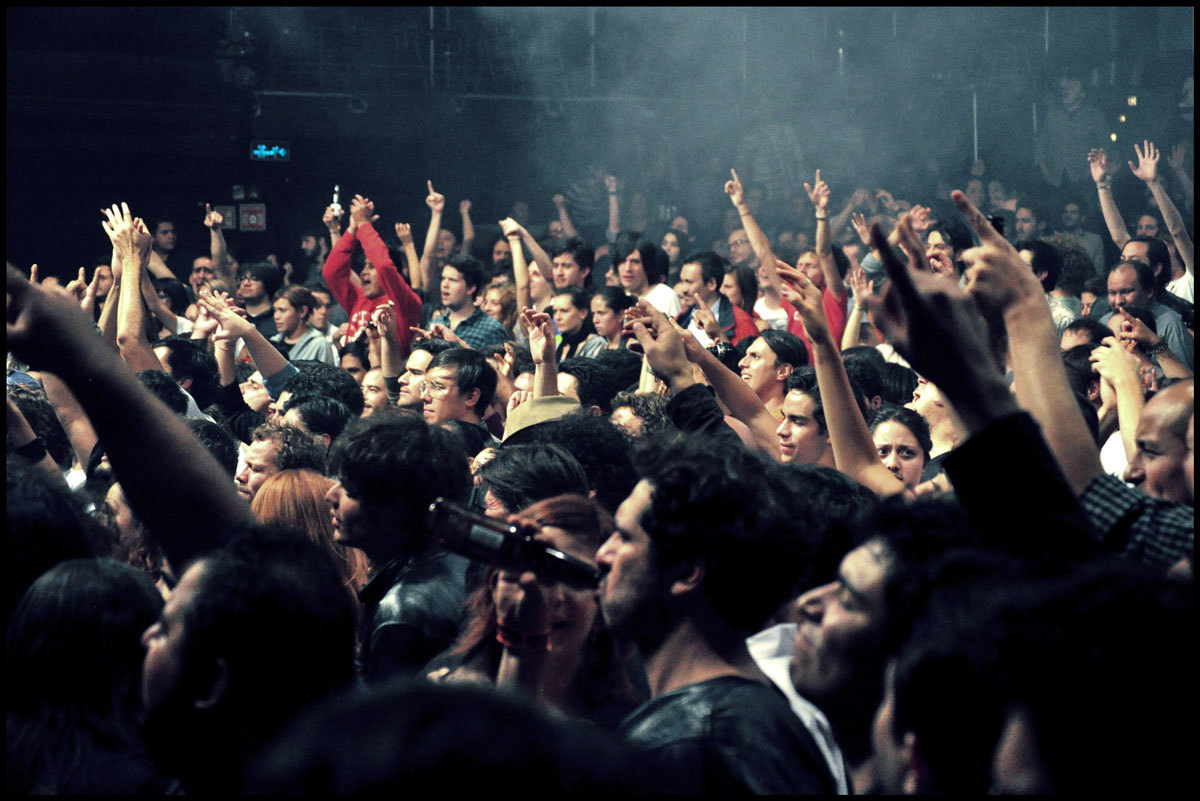In September, an indie-punk band called Speedy Ortiz from Massachusetts announced that they would be running a ‘help hotline’ for their gigs. Envisioned as a means of dealing with the ever-present problem of harassment at gigs, the band set up a number that anyone at their gig could call and get help from if they were experiencing “racism, sexism, classism, homophobia, transphobia, ableism and all other oppressive and marginalising actions and microagressions”.
Unsurprisingly, some have reacted to the initiative less than favourably, claiming it to be excessive, unnecessary and every bigot’s all-time favourite term – ‘political correctness gone mad’. Experience dictates that these people are probably (white) men. Despite gigs no longer being places where riots break out, music events are still far from safe for minorities and women. This is evident in the spate of reported sexual assaults at UK festivals over the last few years: women attending festivals as diverse as Secret Garden Party, Reading, Glastonbury, Wilderness and Latitude have fallen victim to assault, in one case by a male nurse who was supposed to be taking care of them in the medical tent. It goes without saying that these reported cases just scratch the surface of what really goes on.
Women at music events suffer all kinds of harassment, much of which has been normalised as an unavoidable aspect of going out, or brushed off as ‘flirting’. Groping, grabbing, inappropriate comments and unwanted sexual advances are so common in our experiences of going out that we barely register them as aggressions anymore, much less the criminal offences that they actually are. And it is not just female members of the audience that suffer; female musicians are also prone to harassment ranging from having inappropriate comments shouted at them to fans trying to rip their clothes off or grope them whilst crowdsurfing. Speedy Ortiz is fronted by a woman, which is perhaps why they have been the ones to implement the hotline. When asked about her reasons for setting up the hotline, lead singer Sadie Dupuis explained that “I’ve been going to shows since I was a pretty young teenager, and not all the time, but with some regularity, I’ve experienced instances of someone inappropriately touching me, whether that’s in a sexual way or just a disrespectful way”. It is telling that the hotline was set up by a band with a female lead singer: the realities of being female at a gig are still unfortunately either intangible or of little concern for many men.
Aside from Speedy Ortiz’s hotline, the past year has seen a rise in attempts to make clubbing and concerts safer for everyone. Club nights such as Body Party advertising themselves as ‘safe spaces’ tried but ultimately failed in providing a harassment-free zone leading many to question if such a thing was even possible. One of my own personal experiences at Body Party was of two clearly straight men who were circling and non-consensually touching my friends and I. When confronted and asked to leave us alone they would claim that they were gay. These men were taking advantage of the fact that the party stipulated “no homophobia” in order to harass women – proving that ultimately, clubs can only be safe spaces if direct policies are implemented rather than buzzwords.
Indeed, if the only attempt made at making a club a safe space is a statement on your event page and allusions to the need for ‘safe space politics’ in interviews, it is arguable that you are simply co-opting radical political language for your own gain rather than making any kind of difference on the ground. Without the correctly trained security to deal with this kind of behaviour, self-professed safe spaces are no different to any other club space. So how can we ensure that the venues we attend to see our favourite bands or DJs are safe spaces? Hollaback London have set up a Good Night Out Campaign: if you see one of their posters in the venue you are at, this means that their staff and security have been trained in preventing and effectively dealing with harassment. Girls Against and Safe Gigs 4 Women are also organisations created out of a frustration of female and LGBT experiences at music events, looking to make live music a more enjoyable experience. But in a climate in which security and bouncers are themselves often guilty of harassment, is this enough?
Ultimately making spaces truly safe for minorities can only be achieved through a shift in what the average person considers to be normal behavior on a night out, but there are practical things that can be done by venue owners and promoters to make clubbing and live music a safer space for those who are most at risk (via @sezzamitchell).
1. When buying tickets or coming through the door, let people know what behaviour is expected of them and what will not be tolerated
2. Always centre your actions on the voices of the people you are trying to help.
3. Raise awareness of the kinds of things that make people feel uncomfortable, whether it is sexual assault or micro-aggressions
4. Make sure you have gender neutral toilets available in your club space
5. Ensure there are other visible people to whom attendees can report harassment as security staff can be intimidating
More conversations are needed both in online and real world spaces until guaranteeing the safety of those most prone to harassment is of central importance to music venues and the people who run them. But until more work is done to implement safety measures at the top, you can help from the ground up in one simple way: don’t be a dick.
Credits
Text Niloufar Haidari
Photography Mariel A. M.
